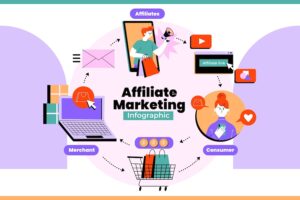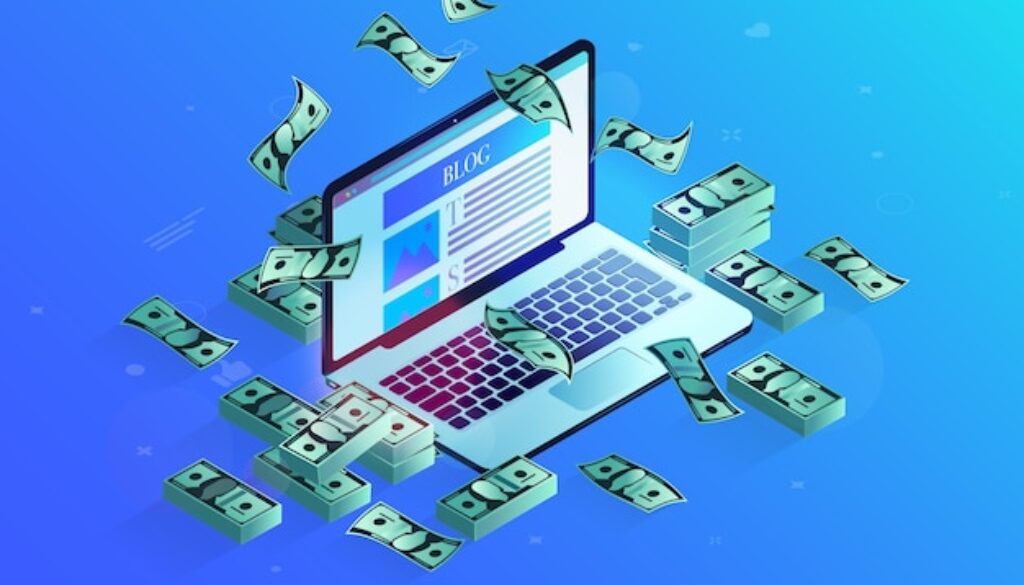How To Make Money on Pinterest: 12 Real Ways
When most people think of Pinterest, they picture cute outfits, dinner recipes, or DIY home projects. But here’s the truth: Pinterest is so much more than just a place to save ideas.
It’s a goldmine for people like you and me who want to make side money or even build a full-time online income.
And the best of it is that you don’t need a big following, paid tools, or even a blog to get started.
I’ve been using Pinterest for a few years now, and I can say this for sure: if you want to learn how to turn your time online into cash, I am going to show you exactly how to do that in this post.
Whether you’re completely new and just starting to learn Pinterest, or you’ve already got a few boards going, there’s room for you to grow and earn.
This post will walk you through 12 real ways you can make money using Pinterest, no guesswork, no gimmicks.
You’ll learn everything from Pinterest SEO basics to using Pinterest templates that get clicks, and even how Pinterest management can become a profitable service on its own.
So, if you’ve ever wondered how to make money on Pinterest, stick around.
I’m going to show you what actually works, step by step. You don’t need to be an expert; you just need a little know-how, and that’s exactly what you’ll get here today.
Let’s get you set up to start making money on Pinterest, for real.
Quick Note: I made $3,647 in a month with Pinterest by using this one simple strategy — and you don’t need a blog or experience to do it. Download the Free Guide Here!
1. Affiliate Marketing

Affiliate marketing is one of the easiest and most beginner-friendly ways to start making money on Pinterest.
It works like this: you promote a product through your special affiliate link, and if someone clicks on that link and buys the product, you earn a commission.
This can be a small percentage or even a flat fee, depending on the affiliate program.
▶▸ Get my easy-to-follow ebook on how to succeed fast with affiliate marketing here!
One of the best parts of this is that you don’t even need a blog or website to get started (although having one definitely adds more credibility and helps with conversions).
To start, sign up for affiliate networks like Amazon Associates, ShareASale, Impact, or LTK. These platforms offer access to thousands of brands you can promote.
Once you’re in, pick products related to your Pinterest niche. For example, if your niche is home decor, you might promote furniture or organizing tools. Then create eye-catching pins that link directly to the product using your affiliate link, or link to a blog post or landing page that includes your link.
Just remember to include a short affiliate disclosure (like “This pin contains affiliate links”) to stay compliant with Pinterest guidelines.
The key to success with affiliate marketing on Pinterest is creating high-quality visuals, engaging titles, and relevant keywords.
Think of your pin like a mini-ad. It should make someone stop scrolling and click.
Over time, with consistent pinning and good SEO practices, your affiliate pins can bring in passive income month after month.
It’s slow to start, but the long-term payoff can be big.
2. Promoting a Blog

Pinterest is basically a search engine with pictures, and it’s a goldmine for driving traffic to your blog. This is where it gets really fun.
Once you’ve got a blog set up, you can monetize it in multiple ways: ads, affiliate links, digital product sales, and email list building.
But to get eyeballs on your content, you need to use Pinterest strategically.
The trick is to create multiple pins for each blog post using keyword-rich titles and descriptions.
For example, if your blog post is about “10 Small Kitchen Organization Tips,” your pin title could be “Tiny Kitchen? Try These 10 Genius Storage Hacks!” Use Pinterest’s search bar and Trends tool to find what people are actually searching for, then use those keywords in your pins.
Also, keep a consistent posting schedule. You don’t need to post 20 pins a day, but 1–5 daily (with a mix of fresh and reshared pins) can help you grow steadily.
Also, use a scheduler like Tailwind or Pinterest’s native scheduler to batch-create and schedule content in advance.
Over time, traffic from Pinterest can help your blog rank better on Google too. More traffic = more ad revenue and more affiliate clicks.
And, when readers sign up for your email list from your blog, you’ve got a warm audience you can promote products to again and again.
3. Selling Digital Products

Pinterest users love beautiful and helpful digital products, especially printables, templates, and guides.
If you’re creative and like designing, this method might be your goldmine.
People are constantly searching for things like meal planners, budgeting spreadsheets, social media calendars, and ebook templates.
The first step is to choose what type of digital product fits your niche. Are you in the personal finance space? A monthly budget tracker could work.
Love organization? Try printable planners. Once you’ve created your product (Canva is great for this), you can sell it on platforms like Etsy, Gumroad, or your own website.
▶▸ Get the clear, simple system for creating digital products that sell Now!
Each has pros and cons: Etsy brings built-in traffic, Gumroad is simple to use, and Shopify gives you full control.
Now comes Pinterest’s role: make pins that show your product in action.
Don’t just show a flat image, instead, use mockups and lifestyle scenes.
If you’re selling a meal planner, create a pin that says “Stay Organized All Week with This Simple Meal Planner” and shows the planner on a kitchen counter.
Add keywords like “printable meal planner” or “weekly meal prep template.”
One of the biggest benefits of selling digital products? You make it once and sell it forever. And with Pinterest’s evergreen nature, your pins can keep driving traffic and sales for months or even years after you post them.
Quick Note: I made $3,647 in a month with Pinterest by using this one simple strategy — and you don’t need a blog or experience to do it. Download the Free Guide Here!
4. Offering Pinterest Management Services

If you know your way around Pinterest (or are willing to learn), offering Pinterest management services is a solid way to make money.
Business owners, bloggers, and ecommerce brands all use Pinterest to drive traffic, but many don’t have time to manage it themselves. That’s where you come in to help.
Pinterest managers handle things like creating pins, writing descriptions, scheduling posts, optimizing profiles, and analyzing results.
You don’t need a formal degree or a certification for that. If you can show you know Pinterest strategy (by growing your own or a client’s account), that’s often enough.
You can offer these services as a freelancer, virtual assistant, or social media manager.
To find clients, try platforms like Upwork or Fiverr, or pitch directly to bloggers and small businesses. Building a personal website or portfolio with past Pinterest work can help you stand out.
One major perk of this method is recurring income. Most clients need help on a monthly basis, so once you land a few, you can build steady, predictable revenue. Plus, it’s a flexible job you can do from anywhere in the world.
5. Selling Physical Products

Have something handmade, custom, or physical to sell? Pinterest is a powerful tool to promote your products.
Whether it’s T-shirts, mugs, candles, or art prints, you can showcase them visually in a way that grabs attention and drives traffic to your shop.
Platforms like Etsy, Shopify, and Amazon Handmade work well with Pinterest.
But here’s the key: don’t just post product photos, instead, create lifestyle content. Show your candle on a cozy coffee table. Style your mug with books and plants. People want to see your product in action before they buy it.
You also need to use keywords that reflect what people are searching for. Instead of titling your pin “Cute Mug,” use “Funny Coffee Mug Gift for Coworkers.” The more specific, the better. Use Pinterest’s search bar and Trends tool to guide you through.
And also keep in mind that, Pinterest is a long game. Your products might not blow up overnight, but with consistent posting, keyword optimization, and quality visuals, your pins can stay active for years and bring a steady stream of visitors to your shop.
6. Using Pinterest to Grow an Email List

Want to know one of the smartest ways to use Pinterest? Grow your email list.
Why? Because email = money. Simple!
You own that list. You’re not depending on a social algorithm. You can pitch your offers, build relationships, and sell directly to your audience anytime.
Here’s how to make it happen: First, create a freebie that solves a specific problem for your audience. This could be a checklist, template, mini course, ebook, or a free guide, anything valuable enough to exchange for an email address.
Next, design a pin for that freebie. Make it clear what the person will get and how it’ll help them.
For example: “Free 5-Day Meal Plan to Save You $50 This Week!” Then, link the pin to a landing page where they can sign up and grab the freebie.
Once they’re on your list, you’re in control. You can start building trust by sending helpful content, then eventually promote your paid products or affiliate offers. It’s one of the most effective ways to make long-term income online.
Pro tip: Put your freebie pins on multiple boards and use different designs for the same offer. This increases your chances of getting noticed. And of course, always use strong keywords so your pins show up in search. Building your email list through Pinterest is slow at first, but powerful once it’s rolling.
Quick Note: I made $3,647 in a month with Pinterest by using this one simple strategy — and you don’t need a blog or experience to do it. Download the Free Guide Here!
7. Monetize Idea Pins
Idea Pins are Pinterest’s version of TikToks or Reels, short-form, vertical content that’s perfect for showing tutorials, behind-the-scenes, or mini demos.
While you can’t add direct links to Idea Pins yet, they’re still a valuable tool for building trust and visibility, which leads to sales and partnerships.
How do you make money from Idea Pins? Two main ways:
- Sponsored content: Once your account grows, brands will pay you to feature their products in Idea Pins. This is common in niches like beauty, food, fitness, home decor, and DIY.
- Promoting your own stuff: You can showcase your digital products, talk about your services, or feature products you’re an affiliate for. People will visit your profile (where you CAN place links) to learn more.
Example: If you sell templates, use Idea Pins to show how to customize them in Canva.
Or if you’re in fitness, share a quick 3-step morning stretch routine and invite viewers to grab your full workout guide from your profile.
Engagement matters here. So keep your Idea Pins creative, helpful, and packed with value. Think slideshows, tips, transformation stories, and how-tos.
Bonus: Pinterest is really pushing Idea Pins right now, so the reach can be huge. Even with no links, they’re worth the effort, especially if you use them to build brand awareness and draw people to your profile where all your monetized content lives.
8. Pinterest Creator Rewards (If Available in Your Country)
Pinterest used to offer a program called Creator Rewards, where they’d pay users for posting high-quality Idea Pins based on specific challenges or content goals.
While it’s not currently available to everyone and has been paused in some regions, it’s still worth watching if you live in a country where it still exists or returns.
Here’s how it worked: Pinterest would list certain monthly goals, like “Create 3 Idea Pins showing a DIY process” or “Get 1,000 saves on a pin.”
If you met those challenges, you’d get paid. Some creators made hundreds or even thousands of dollars a month just by consistently participating on it.
To qualify, you had to meet Pinterest’s eligibility criteria. Usually, that meant having a U.S. business account, posting original content, and keeping up a regular pinning schedule. You also had to apply through Pinterest’s Creator Hub.
Even though Creator Rewards might not be running right now, Pinterest often experiments with monetization programs, so it’s smart to stay in the loop.
If you’re serious about making Pinterest part of your business, check their official Creator Hub for updates.
And while you’re at it, keep building your skills with Idea Pins. They’re a great investment for brand deals, affiliate sales, and traffic growth, even without a direct payout program running. Always think long-term.
Quick Note: I made $3,647 in a month with Pinterest by using this one simple strategy — and you don’t need a blog or experience to do it. Download the Free Guide Here!
9. Promote YouTube Videos
Why Use Pinterest for YouTube?
Pinterest users love visual content, and that includes video. If you’ve got a YouTube channel, Pinterest is one of the best platforms to bring in long-term traffic to your videos.
Unlike Instagram or TikTok, where content disappears fast, a well-optimized pin on Pinterest can send views to your videos for months or even years to come.
How to Do it The Right Way
Create eye-catching pins using Canva with the same title and thumbnail style as your YouTube videos.
Link each pin directly to the video on YouTube. Add a keyword-rich description and use relevant hashtags.
Focus on niche content that solves a problem or teaches something. Pinterest users love tutorials, tips, and how-tos.
A Pro tip: Repurpose short clips from your videos as Idea Pins to build visibility and trust before leading people to your channel.
10. Drive Traffic to an Online Course or Coaching Program

Perfect For:
If you’re a course creator, coach, or teacher, Pinterest is a hidden gem. It works great for fitness coaches, business mentors, productivity teachers, parenting educators, basically anyone with helpful knowledge to share.
How to Promote Your Courses
Design pins that tease what your course offers or solve a small part of a bigger problem.
Link those pins to a free lead magnet, webinar, or directly to your course sales page.
For coaching, share inspirational quotes or results-based testimonials as pins.
Pinterest thrives on value-first content, so make your pins educational or motivating.
Bonus tip: Add a short, clickable CTA in the pin graphic like “Free Class” or “Join the Challenge.” That can really boost your clicks and conversions.
11. Sell Stock Photos or Pinterest Templates
What to Sell
If you’re good with photography or graphic design, you can create and sell products that Pinterest users actually need.
Styled stock images, flat-lays, and Canva pin templates are super popular.
Bloggers and content creators are always looking for shortcuts, and your digital designs can be the solution for them.
Where to List it
You can sell it on Etsy, Creative Market, or even your own Shopify site.
Use Pinterest to promote your items with example pins showing how your templates or photos look in use.
People want to visualize what they’re buying, so use clean mockups, lifestyle examples, and write out exactly what’s included.
Be sure to use the right keywords like “Pinterest templates for bloggers” or “stock images for business coaches” to get discovered.
12. Partner With Brands (Sponsored Content)
How Sponsorships Work
As you grow your Pinterest following and engagement, brands may start noticing you.
Sponsored content means they’ll pay you to create and share pins featuring their product or service, especially if you’ve built trust with your niche audience.
How to Land Deals
Start by building a strong presence with niche-focused boards and consistent pinning.
Make sure your content aligns with the types of products you’d like to promote.
You can reach out directly to brands with a short pitch and media kit or sign up for influencer platforms like Aspire, Social Cat, or Collabor8.
Focus on quality content, not follower count. Brands care about engagement and audience fit, not just numbers. And always label sponsored pins clearly for trust and transparency.
Bonus: Tools to Make Life Easier
Doing everything manually on Pinterest can be a drag. But the right tools can save you hours and help you grow faster.
Here are a few must-haves that beginners love:
Scheduling Tools
-
Tailwind
Tailwind is a Pinterest-approved scheduler that lets you batch your pins for the entire week or month. It also gives suggestions on the best times to post and has smart features like “Communities,” where you can share pins with others in your niche for a traffic boost. -
Pinterest’s Own Scheduler
Pinterest now has a built-in scheduling tool inside your business account. It’s free, simple, and lets you schedule pins up to 2 weeks ahead. Perfect for beginners who want to stay consistent without paying for tools right away.
Keyword & SEO Tools
- Pinterest Trends
Pinterest Trends shows you what topics are popular and when. Just search your niche and see what’s rising, great for planning pins around seasonal or trending topics. - Pinterest Search Bar
This free hack is gold. Type in your niche or keyword and look at the auto-suggestions. Those are the exact search terms users are typing, and they should go right in your titles, descriptions, and even pin graphics. - Keywords Everywhere
Want to dig deeper? This browser extension gives you search volume and keyword suggestions. It’s helpful for bloggers and creators who want to align their Pinterest and Google traffic strategies.
Final Tips for Beginners
Feeling overwhelmed? No. Don’t be. Here’s a quick list of what really matters when you’re just starting out:
- Pick One Income Stream First
Don’t try to do affiliate links, digital products, YouTube, and coaching all at once. Choose one method from the list above, and go all in for 60 days. You’ll learn faster and build momentum. - Keep Things Simple
You don’t need fancy designs or a million boards to win on Pinterest. Stick to clean graphics, bold text, and helpful content. Done is better than perfect. - Stay Consistent — Not Perfect
Pinterest is a long game. You probably won’t go viral overnight, and that’s okay. But if you pin regularly and focus on helping your audience, growth will come. Set a realistic schedule, even just 3 pins a day, and stick to it for at least 90 days.
Conclusion
Making money on Pinterest as a beginner in 2025 isn’t just possible; it’s one of the most beginner-friendly platforms out there.
You don’t need a blog. You don’t need a huge following. All you need is a smart plan, consistent effort, and a little creativity.
Pick just one method from this list. Focus on giving value. Pin consistently. And most importantly, give yourself the time to learn and grow.
The income will follow.

